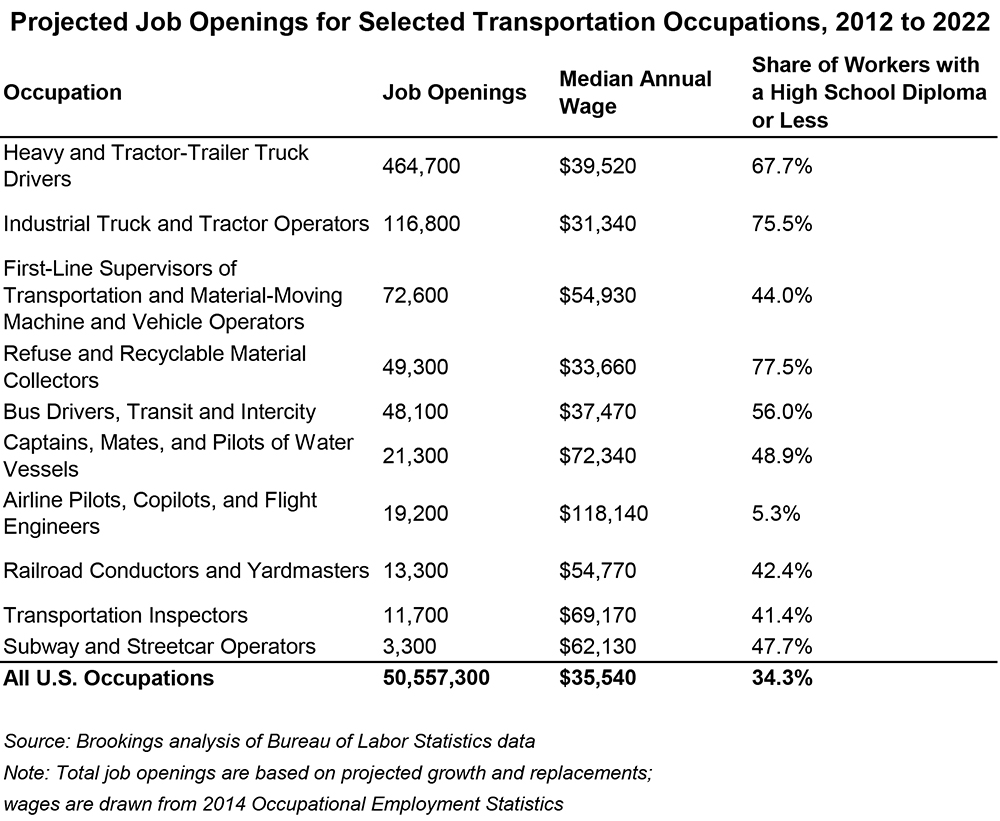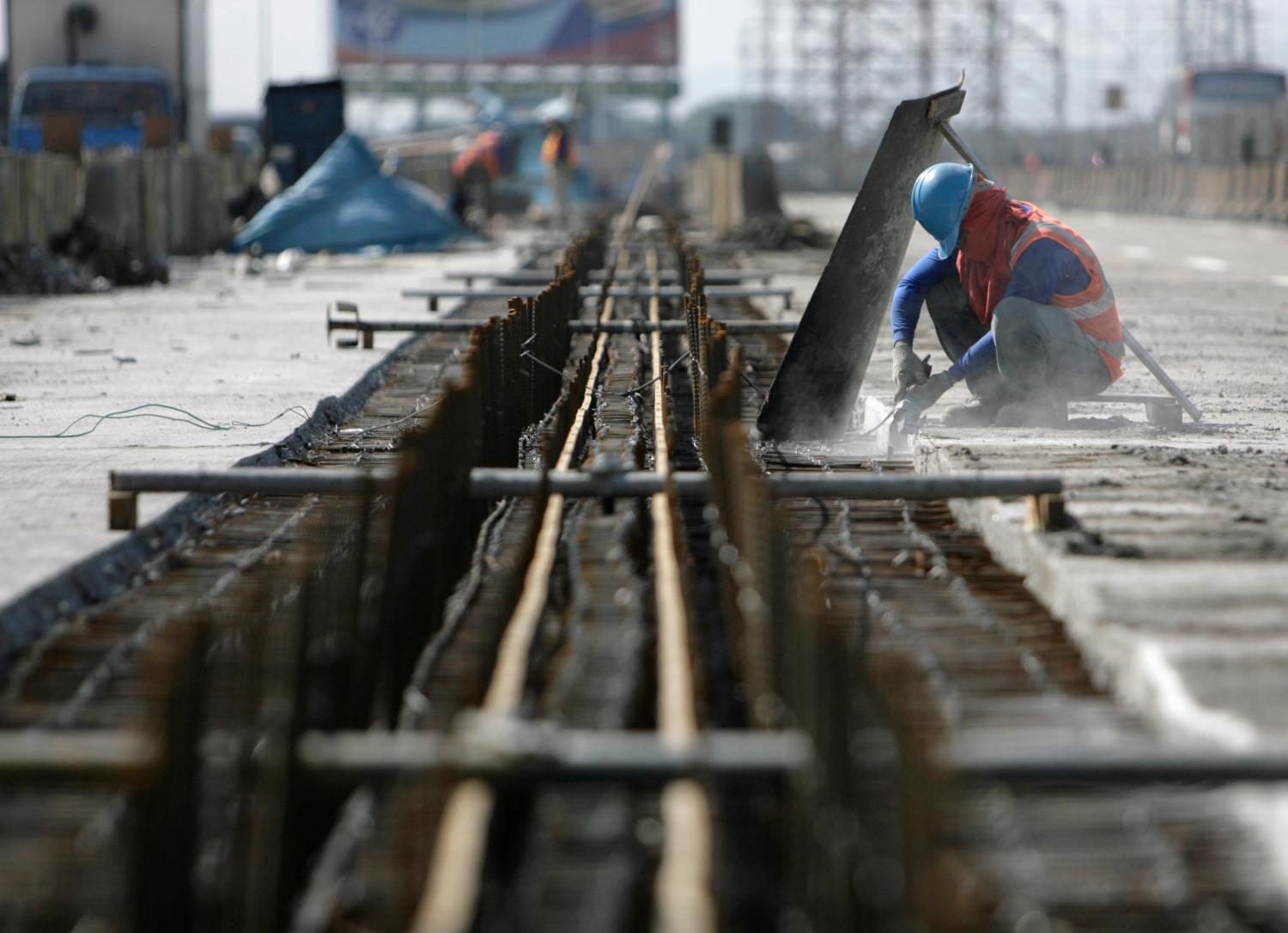Labor Day unofficially marks the end of summer and the end of the construction season for many infrastructure projects across the country.
The nation’s infrastructure needs, though, will last long after the holiday weekend, with significant implications for the labor market in particular. After all, more than 14 million people, or one out of every ten workers nationally, are involved in constructing, operating, designing, and governing the country’s infrastructure assets, including transportation, water, energy, and more. Our recent work has also found that these jobs pay more competitive wages compared to all jobs nationally—up to 30 percent more to low-income workers—expanding opportunity and filling a huge void in a critical segment of the workforce.
Among these various jobs, the transportation sector has perhaps the most glaring needs, as recently highlighted in an excellent joint study by the U.S. departments of Education, Transportation, and Labor.
Looking at the full spectrum of jobs in this sector—including trucking, transit, highways, air, rail, and maritime transportation—the study underscores the importance of training and recruiting millions of workers in the years ahead, especially as turnover and retirements surge. With more than half of these workers over the age of 45 and many long-term opportunities available in operation and maintenance, 4.6 million workers will be hired over the next decade alone. At the same time, 13 of the 20 highest demand transportation jobs pay above the median wage, further boosting their appeal to job seekers.
Since these transportation and freight-related positions account for three-quarters of all infrastructure jobs and touch every market across the country, they will need to play a central role in future workforce development strategies. In addition to their relatively high wages and low barriers to entry, several individual occupations, such as truck drivers, have among the greatest number of projected job openings and should figure prominently in these efforts.

While identifying transportation jobs with the most pressing labor needs is an important first step for policymakers, agencies, and businesses, ensuring that there are the appropriate investments and programs in place to support workers in this sector is crucial. Through its Ladders of Opportunity initiative, for instance, the U.S. Department of Transportation has helped bolster career pathways for workers and financed a variety of new training opportunities. Likewise, states and metro areas continue to plug ahead on a range of needed transportation upgrades, boosting job growth despite ongoing congressional gridlock. Combined, these efforts not only help pave the way for today’s infrastructure improvements, but also for tomorrow’s workers.
The Brookings Institution is committed to quality, independence, and impact.
We are supported by a diverse array of funders. In line with our values and policies, each Brookings publication represents the sole views of its author(s).




Commentary
As summer construction winds down, transportation jobs challenge still looms large
September 3, 2015